Galium mollugo – Hedge bedstraw
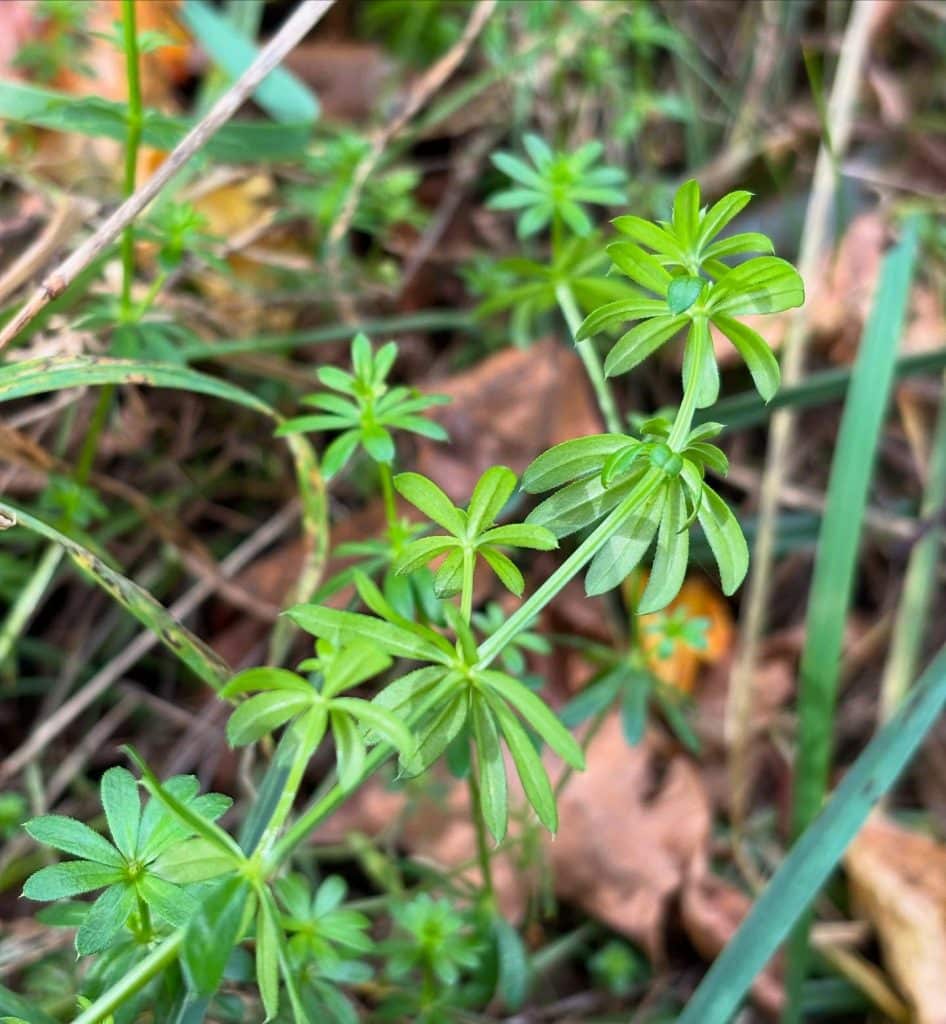
Hedge bedstraw (Galium mollugo) is a non-native perennial with edible uses. Hedge bedstraw can be found in fields and farms. Hedge bedstraw can be identified by its smooth stems and leaves that are in whorls of 6-8. Small white flowers are produced in the summer. The young shoots or top few inches of older stems […]
Symphyotrichum novae-angliae – New England Aster
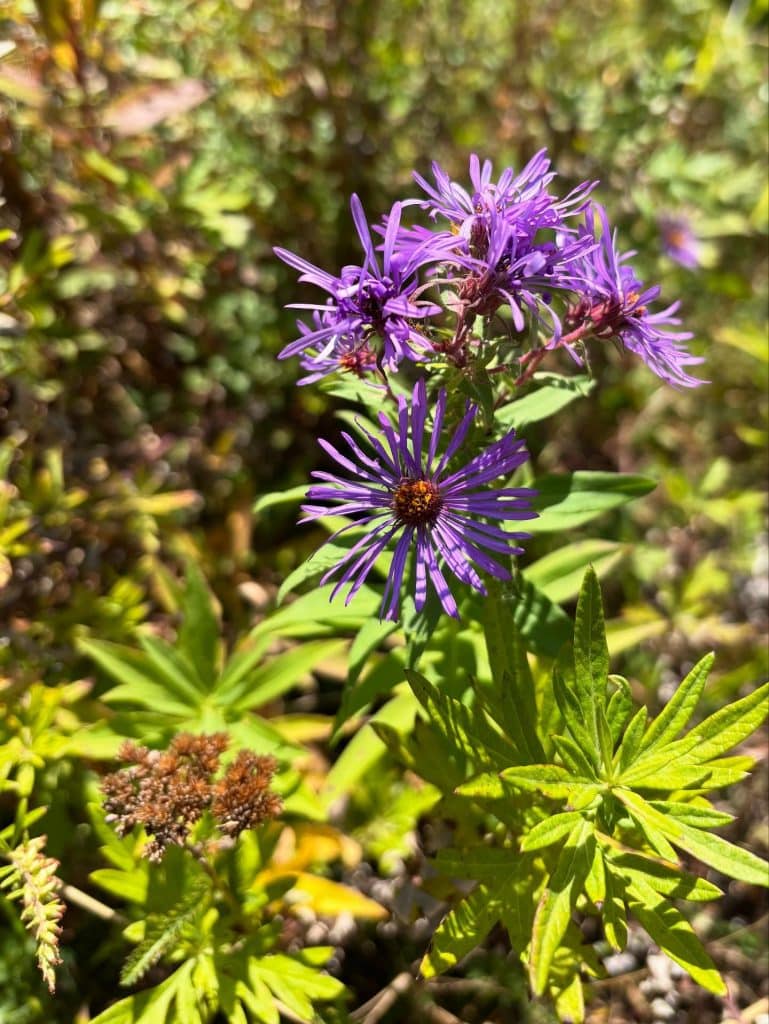
New England aster (Symphyotrichum novae-angliae) is a native perennial with late blooming flowers. New England aster can be found in open, sunny areas such as meadows and fields. New England aster is easiest to identify in the fall when it produces pale lavender to purple flowers with yellow centers. Stems and leaves have a […]
Salicornia spp. – Glasswort
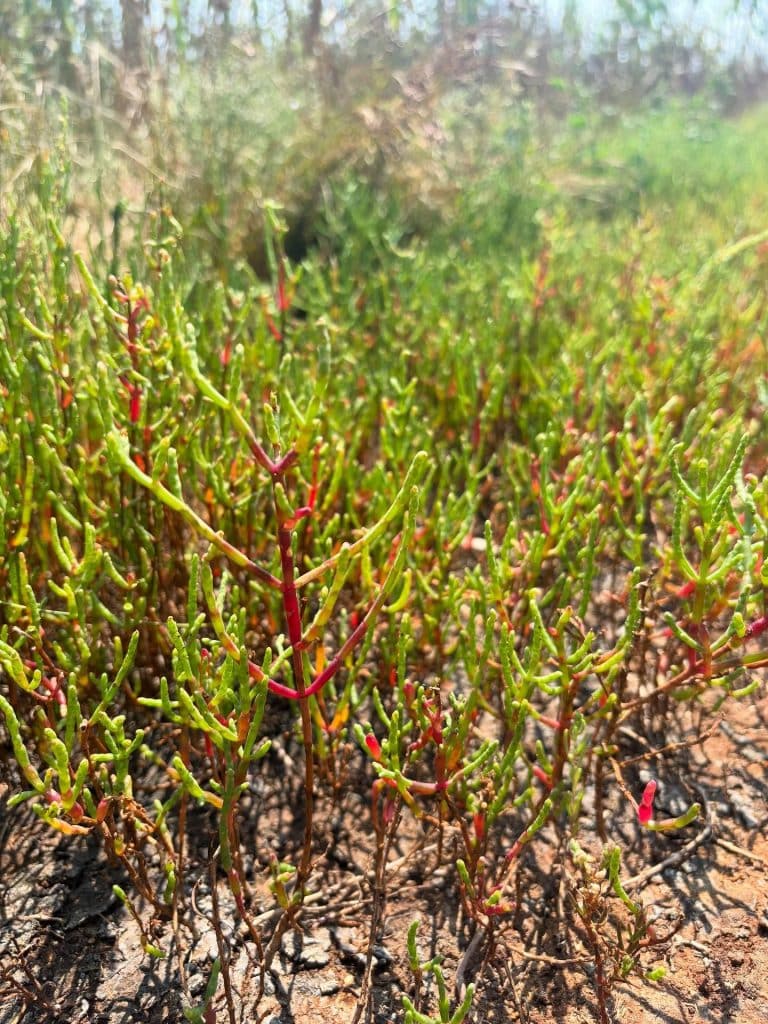
Glasswort (Salicornia spp.) is a native, edible plant with salty, succulent stems. It can be found in salt marshes and coastal areas. Glasswort, also called samphire or sea bean, can be identified by its cylindrical stems that are greenish in the summer, turning reddish in the fall. The tender tips of the stems can be […]
Melilotus albus – White sweet clover
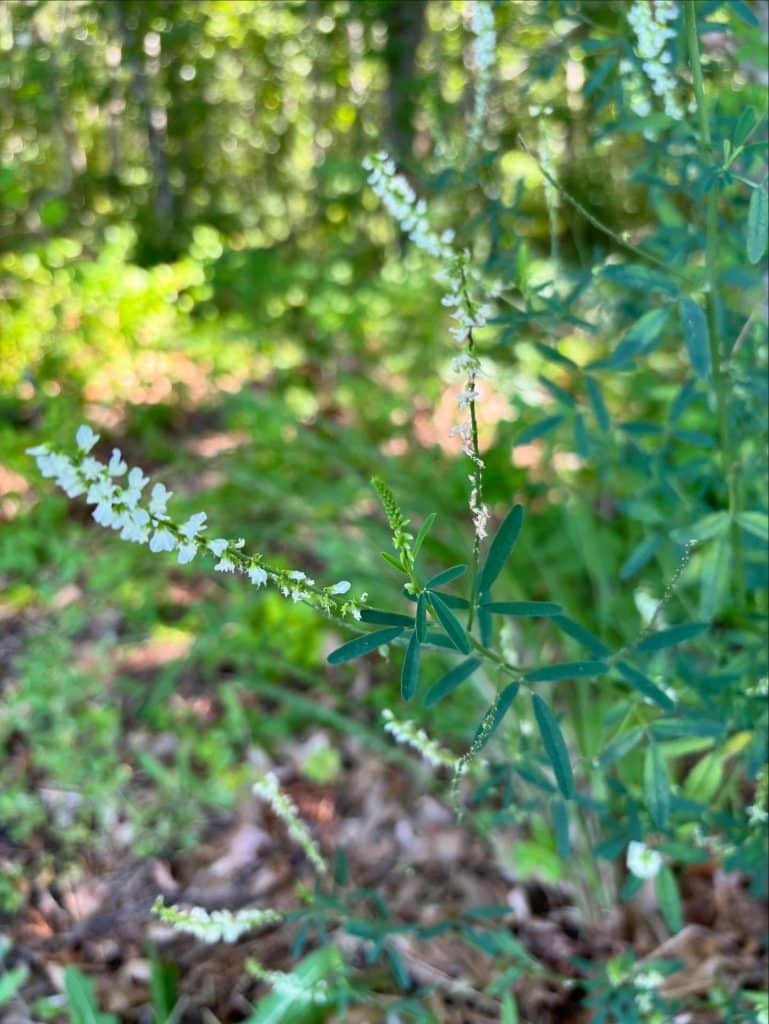
White sweet clover (Melilotus albus) is a non-native plant with edible uses. It can be found in disturbed soil that receives full sun. White sweet clover, also known as melilot, can be identified by its compound leaves divided into three leaflets and clusters of small white flowers. Young leaves can be used in a […]
Sonchus arvensis – Perennial Sow Thistle

Perennial sow thistle (Sonchus arvensis) is an introduced edible dandelion look-a-like. It can be found in sunny areas such as gardens, fields, and waste places. Perennial sow thistle has a dandelion-like flower, but unlike dandelion, there will be multiple flowers per stalk. Flowering stalks will be densely hairy. The hollow stem will produce a milky […]
Russula aeruginea – Green Russula

Green russula (Russula aeruginea) is an edible mushroom that can be found summer-fall. It grows in association with hardwoods or conifers, often with birch trees. Green russulas are identified by their uniform green cap and brittle stem. Spore print is creamy yellow. Green russulas have a mild flavor that can be compared to white fish. […]
Amaranthus retroflexus – Common Amaranth
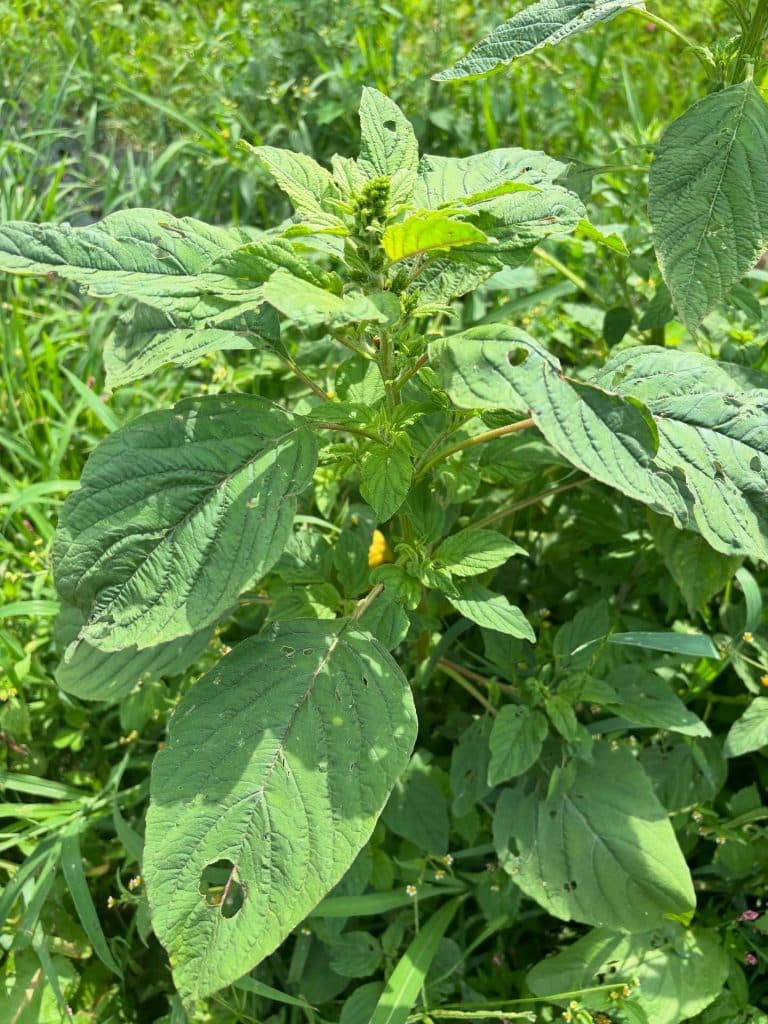
Common amaranth (Amaranthus retroflexus) is a native annual with edible leaves, stems, and seeds. It can be found in farms and gardens where it is usually considered a weed. The plant prefers full sun and disturbed soil. Common amaranth has reddish stems, leaves with wavy edges, green flowers, and black seeds. Leaves are best harvested […]
Polyporus umbellatus – Umbrella polypore
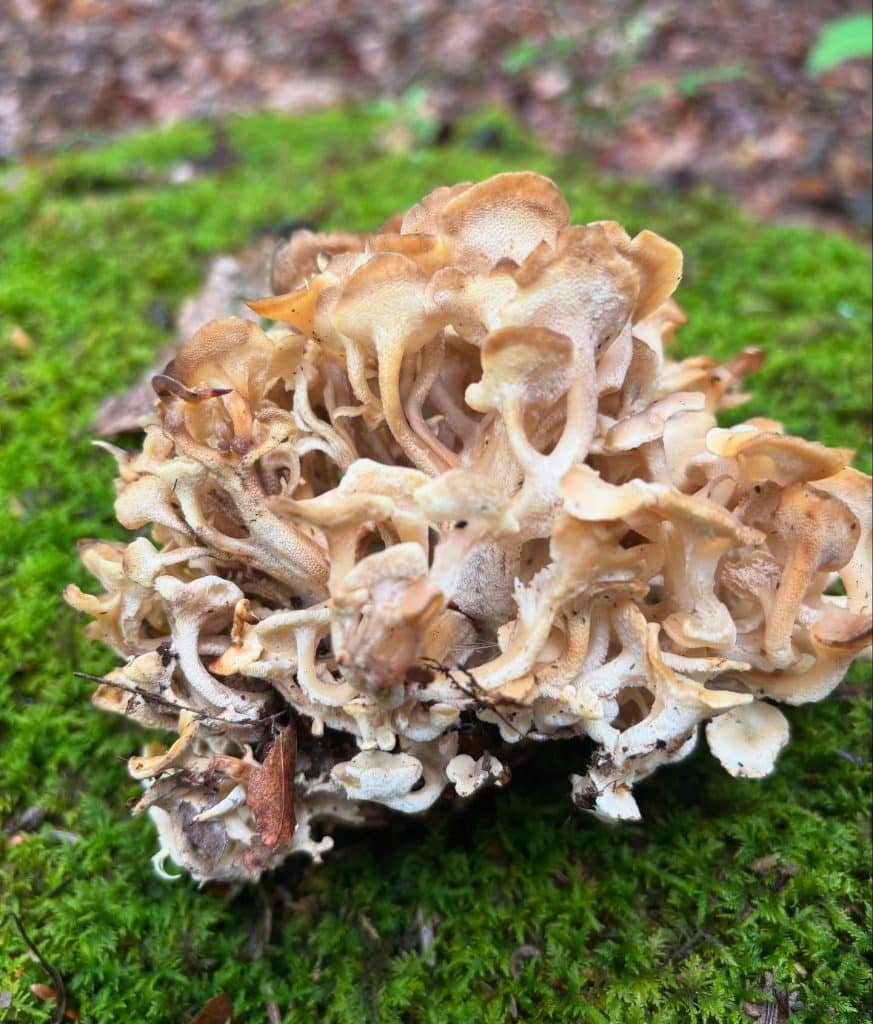
The umbrella polypore (Polyporus umbellatus) is a rare, choice edible mushroom. It can be found at the base of hardwood trees, acting as a weak parasite or a saprobe. They fruit spring-fall. The mushroom can be found at the same spot year after year. The mushroom is composed of umbrella-shaped caps that emerge from a […]
Amanita chrysoblema – American Fly Agaric
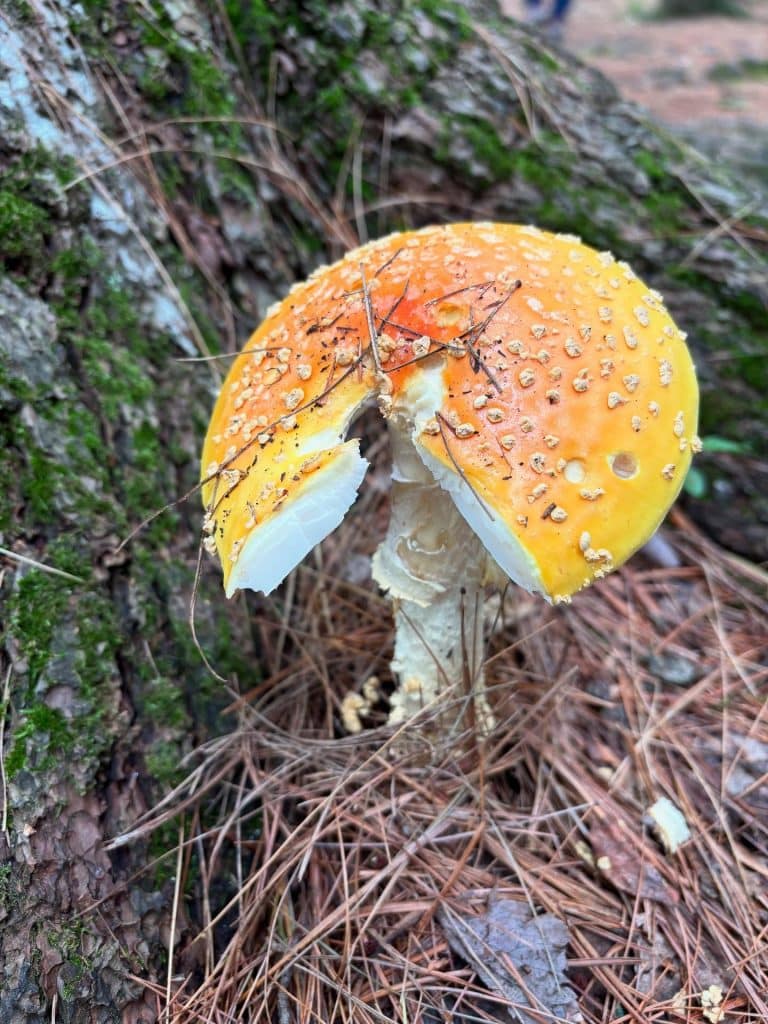
The American Fly Agaric, yellow-orange variant (Amanita chrysoblema) is toxic, psychoactive, or edible depending on preparation. It fruits often in the fall and occasionally in the spring. This species was previously called Amanita muscaria var. guessowii. The American fly agaric is often found growing mycorrhizally with conifers but can also associate with deciduous trees. […]
Suillus weaverae – Butterball Bolete

The butterball bolete (Suillus weaverae) is an edible mushroom that fruits summer-fall. It is often one of the first boletes to fruit. The mushroom has an orange-brown, slippery cap and small glandular dots on the stem. The cap may develop a patchwork pattern as it ages. The pore surface is white at first, becoming yellow […]
Sedum sarmentosum – Stringy stonecrop
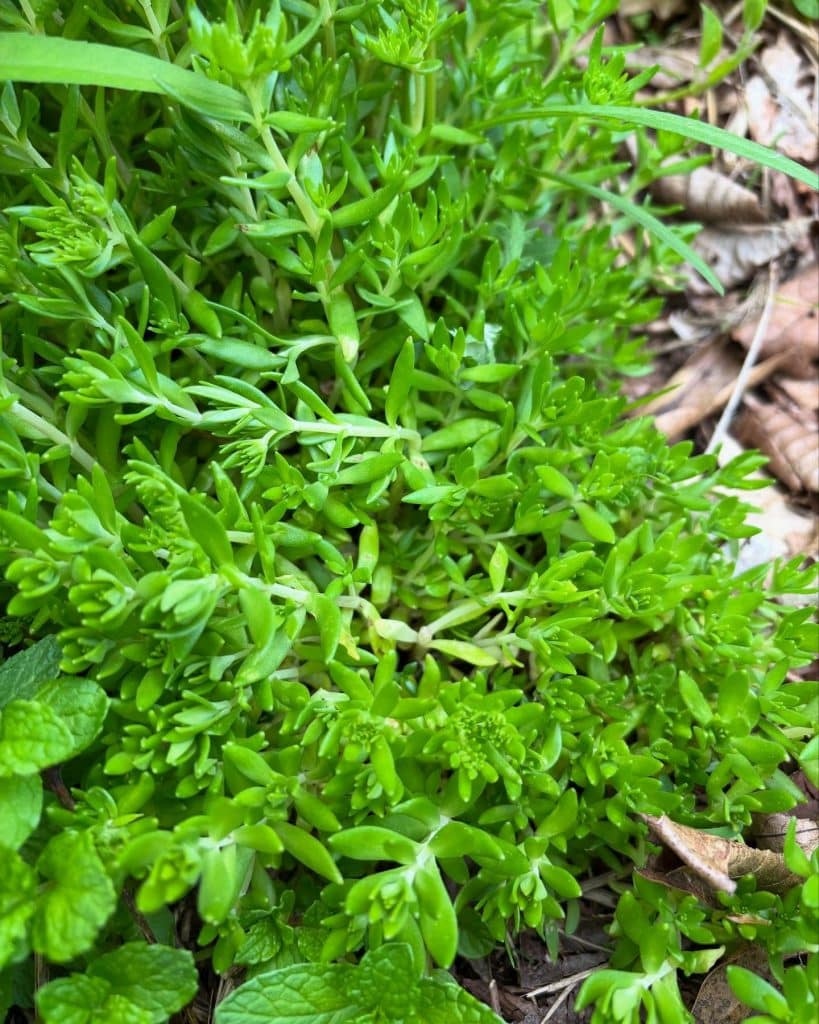
Stringy stonecrop (Sedum sarmentosum) is an introduced perennial with edible leaves. It can be found in sunny areas with sandy soil. The plant can spread quickly, forming a mat on the ground. The fleshy leaves are arranged in whorls of three. Yellow star-shaped flowers are produced in the summer. The plant is edible raw or […]
Solidago rugosa – Wrinkleleaf Goldenrod
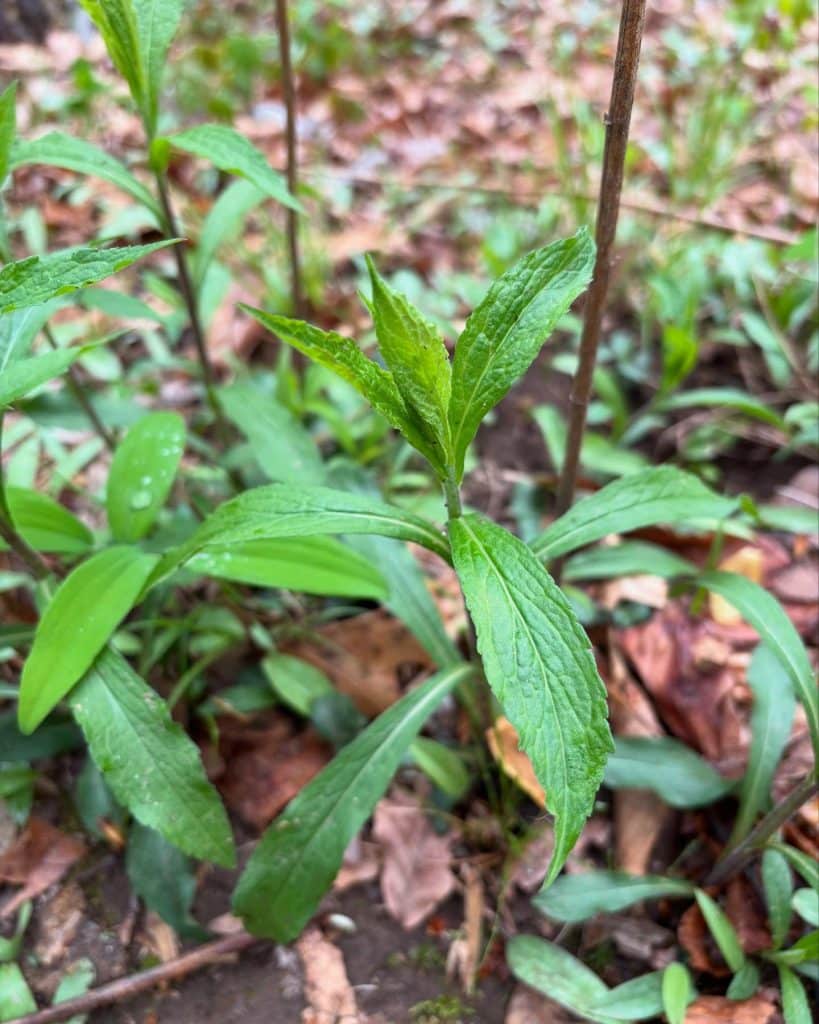
Wrinkleleaf goldenrod (Solidago rugosa) is a native perennial with edible and medicinal uses. There are over 75 species of goldenrod (Solidago spp.) in the United States. All above ground parts of goldenrods are edible, but taste varies depending on species. Goldenrods can be found in areas with well-drained soil and full sun. Wrinkleleaf goldenrod […]
Cercis canadensis – Eastern Redbud
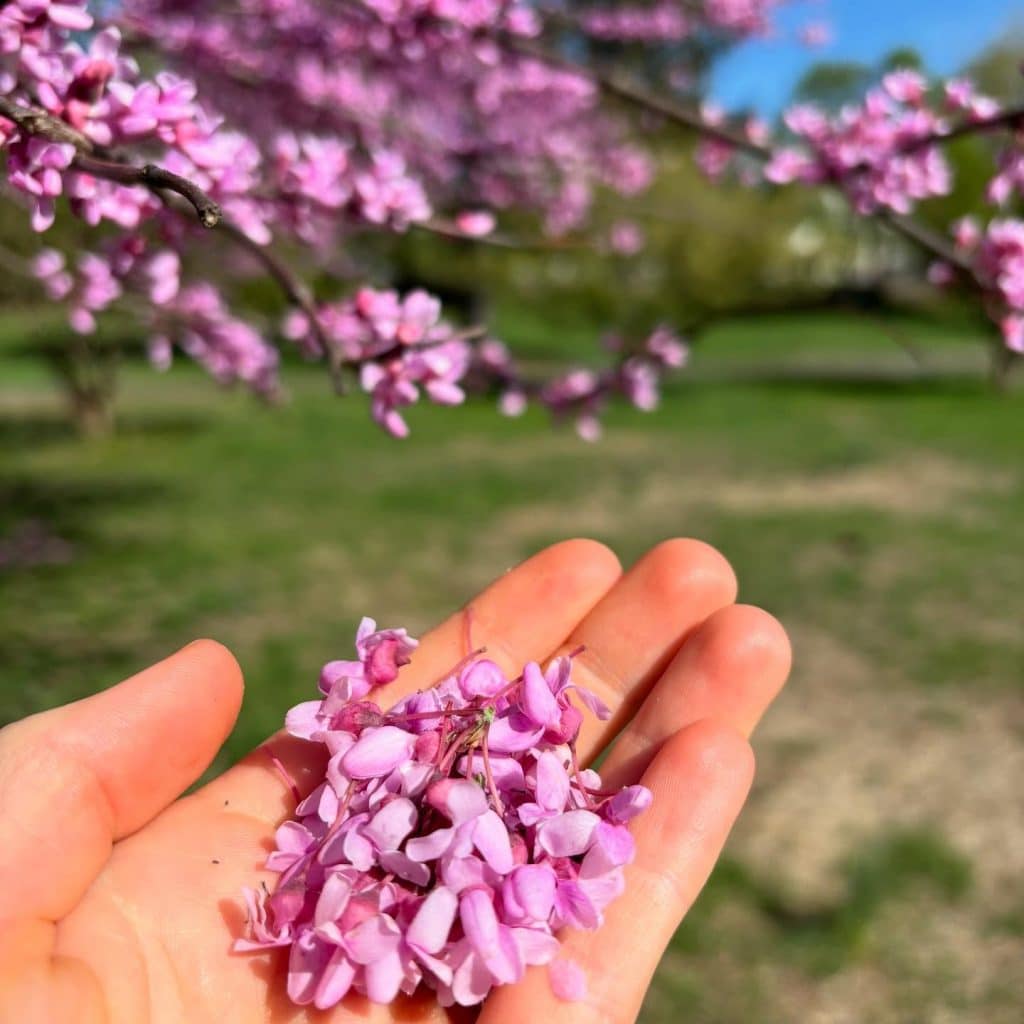
Eastern redbud (Cercis canadensis) is a tree native to southwestern CT that produces edible flowers in mid-spring. Eastern redbud can be found in mixed woodlands or cultivated areas. Pink flowers appear in spring before the leaves emerge. Leaves are alternate and heart shaped. Flowers become pods in later spring. Redbud blossoms taste like sweet peas […]
Ulmus pumila – Siberian Elm
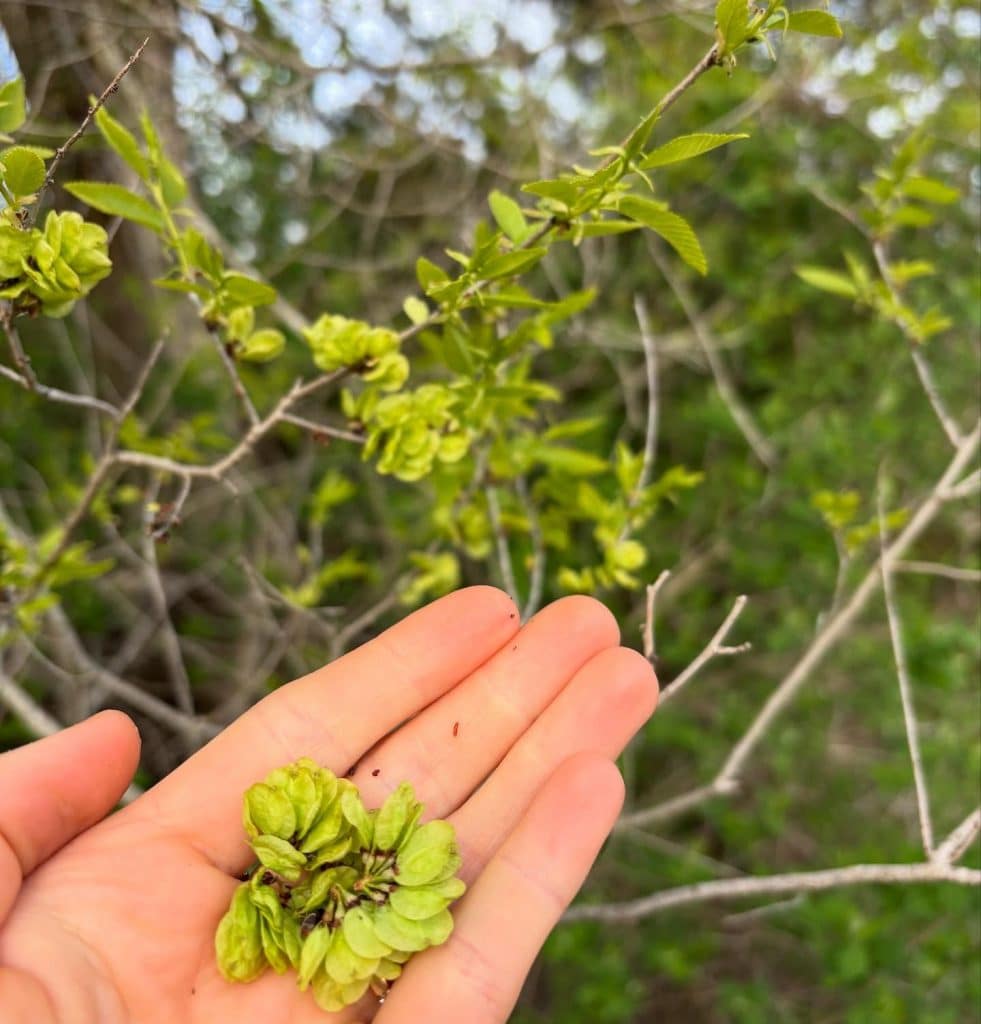
Siberian Elm (Ulmus pumila) is an invasive tree with edible samaras (seeds) that appear mid-spring. Siberian elm can be found in sunny areas such as fields and waste places. Siberian elm can be identified by its furrowed bark and alternate leaves that are elliptical in shape with toothed edges. Leaves have an uneven leaf base. […]
Pinus strobus – Eastern White Pine
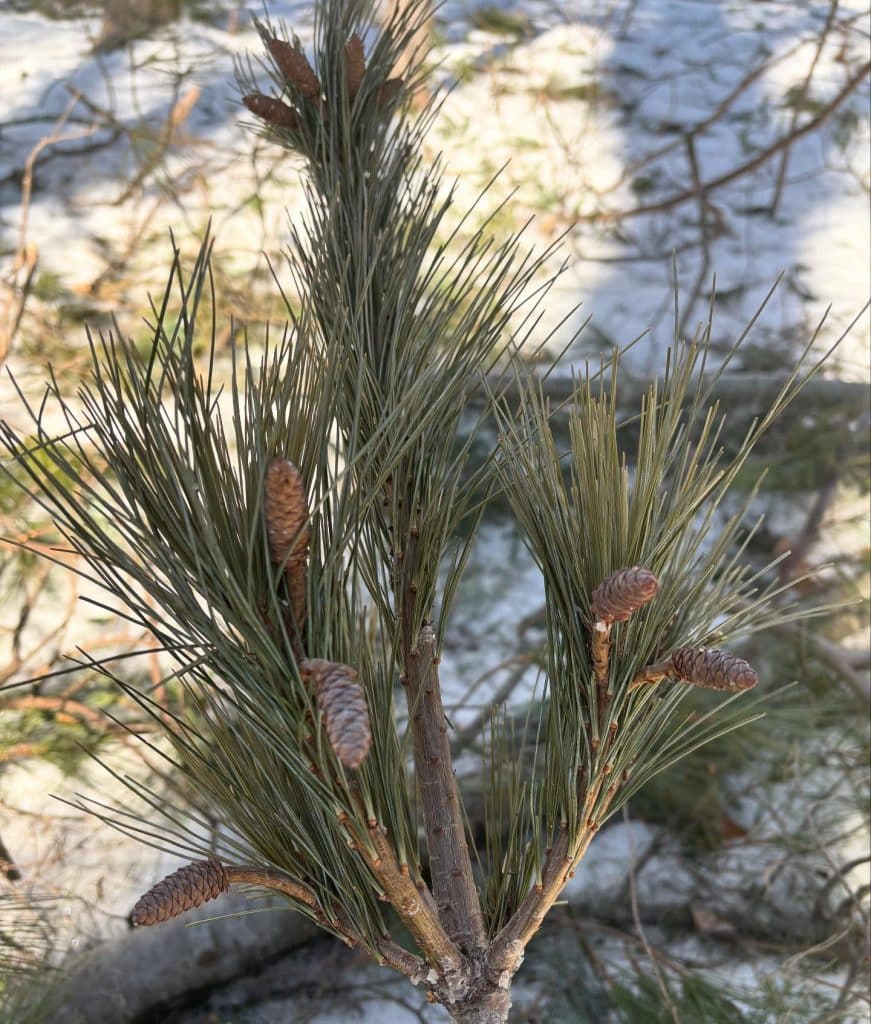
Eastern white pine (Pinus strobus) is a native tree that can be foraged year-round. The entire tree is non-toxic. Eastern white pine has needles that grow in groups of five. This is the only pine tree in Connecticut that has five needles per bundle. Needles are edible and can be used to make tea year-round. […]
Codium fragile – Dead Man’s Fingers
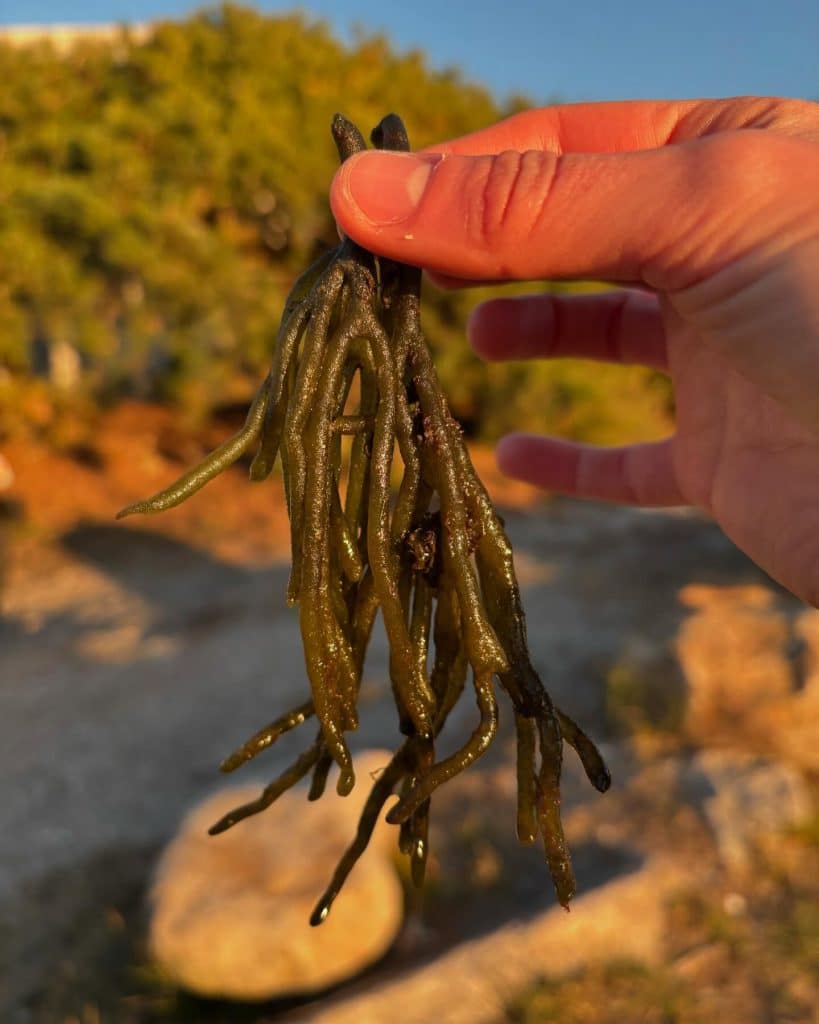
Dead Man’s Fingers (Codium fragile) is an edible and invasive species of seaweed that originated in Japan. Dead man’s fingers can be found along the coastline during low tide. Seaweed can be harvested year-round. The plant is named for its finger-like fronds that hang from rocks. Dead man’s fingers can be a nuisance to […]
Laetiporus sulphureus – Chicken of the Woods
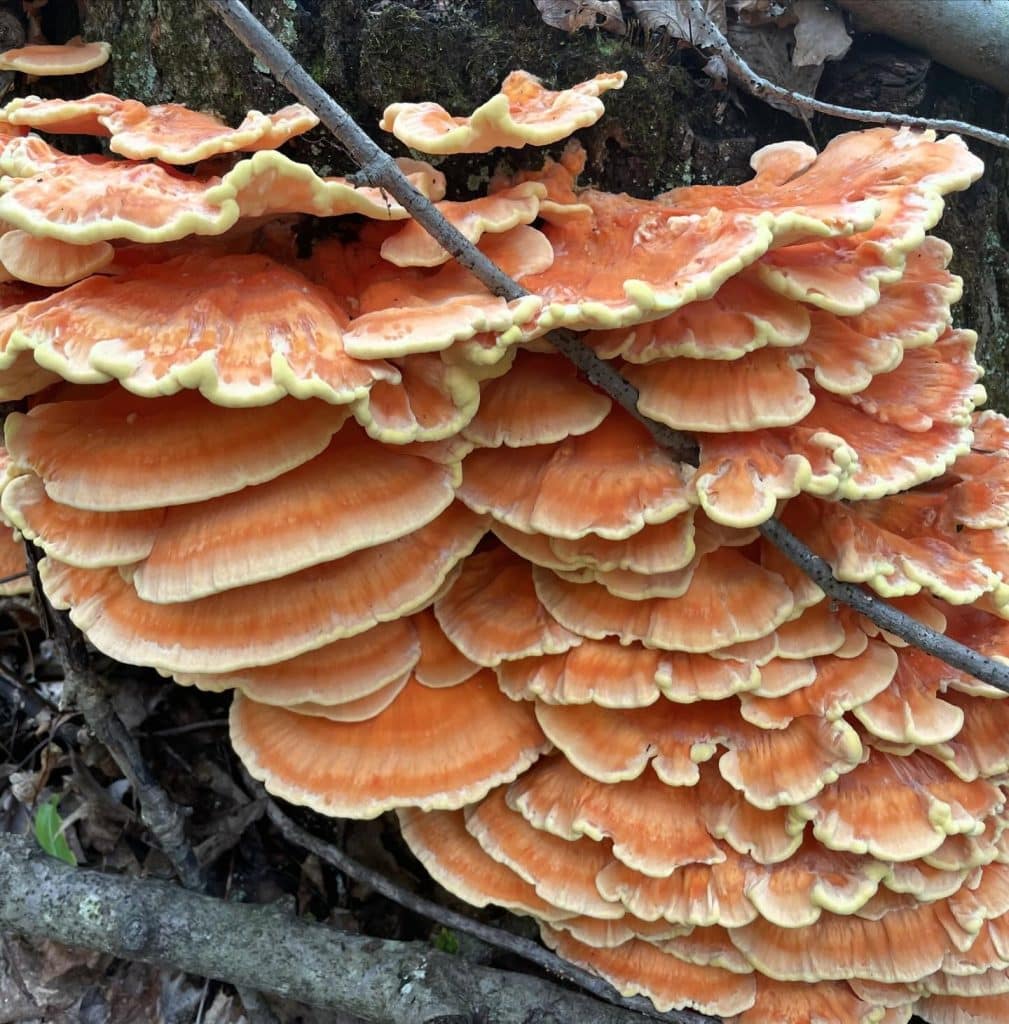
Chicken of the woods (Laetiporus sulphureus) is an edible mushroom that has a flavor and texture that is similar to chicken. Laetiporus sulphureus can be found growing on living or dead hardwood trees from May-November. It has bright orange caps with yellow edges. Pores and flesh are both yellow. Spore print is white. Chicken of […]
Solanum nigrum complex – Black nightshade
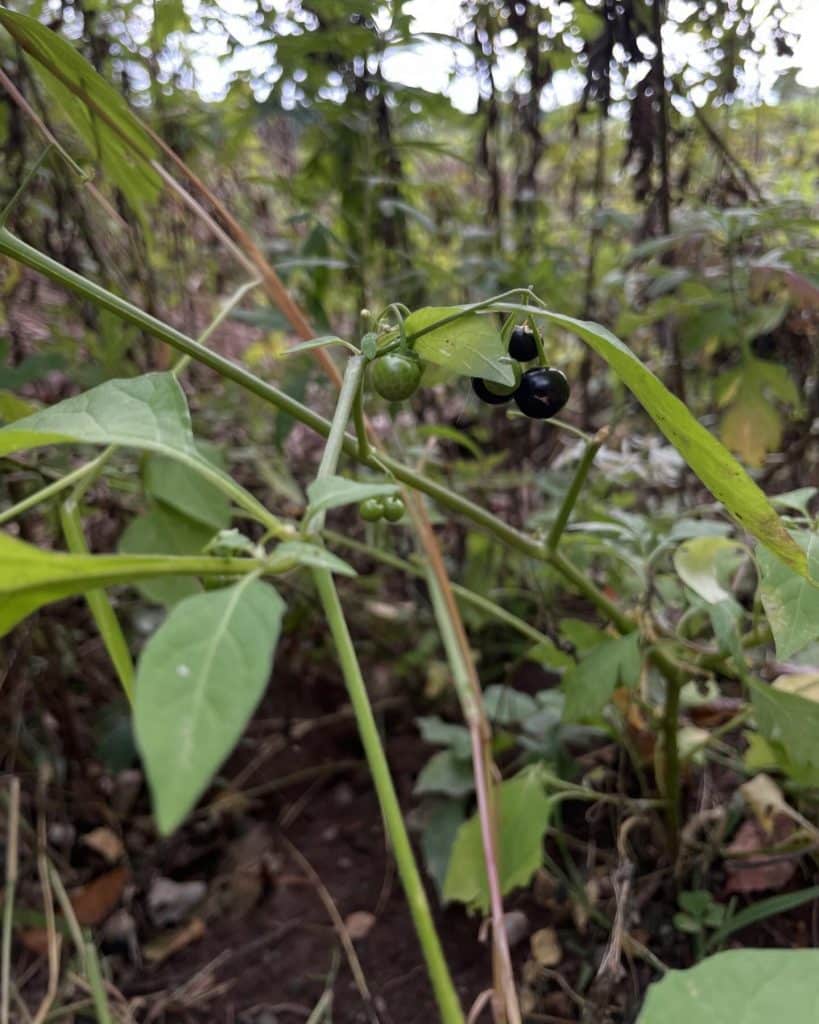
Black nightshade (Solanum nigrum complex) is an edible member of the nightshade family. It is an annual or occasionally a perennial that grows throughout the United States. It can be found in gardens, fields, and disturbed areas. Black nightshade leaves are alternate and can be smooth or slightly toothed. In the summer, the plant produces […]
Hericium americanum – Bear’s Head Tooth
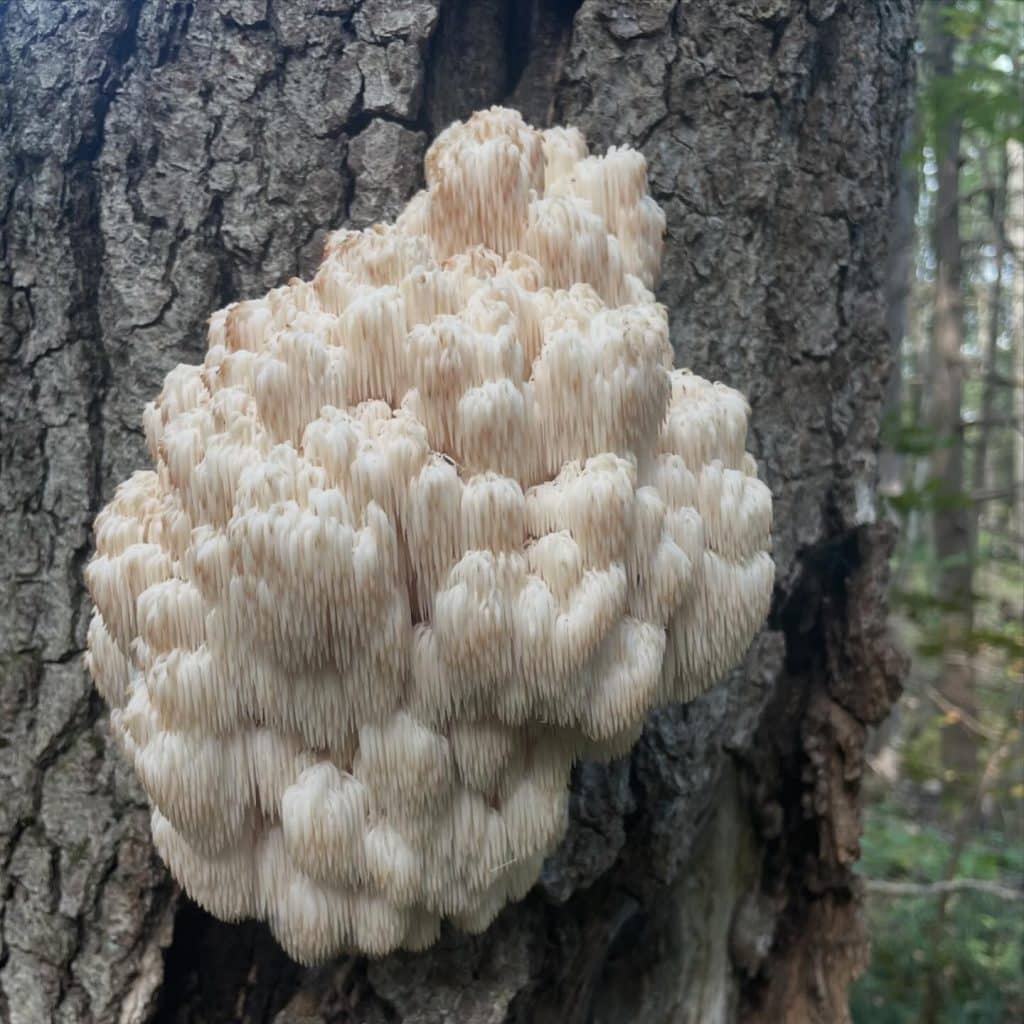
Bear’s head tooth (Hericium americanum) is an edible and medicinal mushroom that is closely related to lion’s mane (Hericium erinceus). It fruits from late August to early November. Bear’s head tooth can be found as a parasite or saprobe on hardwood trees, especially beech, oak, and maple. It is often found in damaged parts of […]
Apioperdon pyriforme – Pear-shaped Puffball
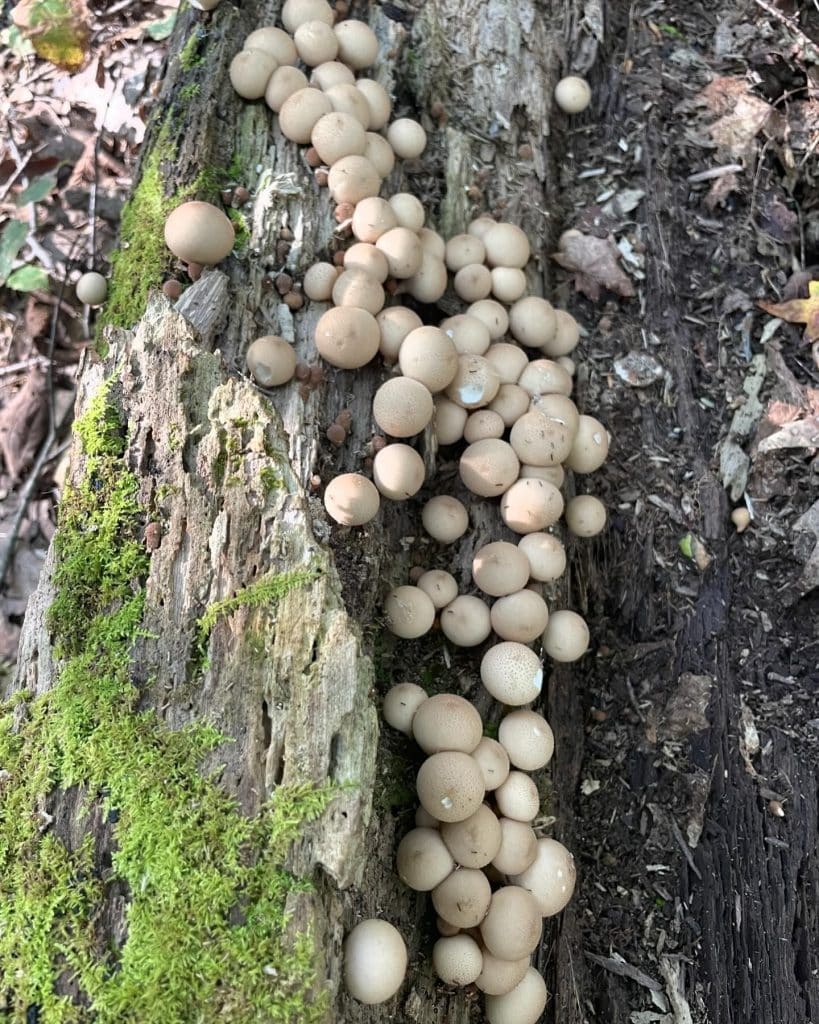
The Pear-shaped puffball (Apioperdon pyriforme) is an edible mushroom that can be found as a decomposer of both coniferous and deciduous trees. It often fruits in large, dense clusters. The pear-shaped puffball can be either pear shaped or spherical. The color ranges from cream to yellowish-brown. This inside is white and marshmallow-like at first, becoming […]
